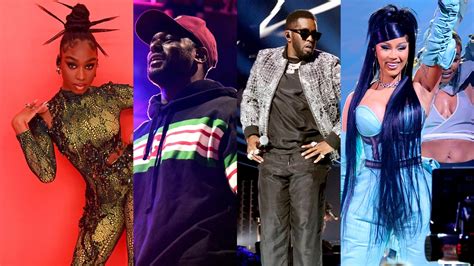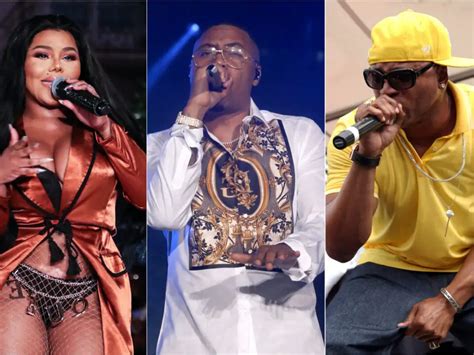Kodak Black, a name synonymous with modern hip-hop, has captivated audiences with his unique sound, raw storytelling, and undeniable influence on youth culture. Born Dieuson Octave, Kodak Black’s rise from the streets of Pompano Beach, Florida, to global stardom reflects both his musical talent and resilience. His hit singles and albums have cemented his place in the rap scene, while his rebellious persona has kept him in the spotlight for both his artistry and controversies. In this article, we explore Kodak Black’s journey through his music, his impact on the hip-hop genre, and his undeniable connection with today’s youth culture.
ujiyor.net will take you through an extensive exploration of this topic.
1. Early Life and Rise to Fame
Kodak Black, born Dieuson Octave on June 11, 1997, in Pompano Beach, Florida, grew up in a challenging environment surrounded by crime and poverty. Raised by his mother in a housing project, Kodak turned to music at a young age as a means of escape and expression. Influenced by Southern rap, he began rapping in elementary school and eventually joined a local rap group, Brutal Youngnz, at the age of 12.
His raw talent and authentic lyrics quickly gained attention, leading to the release of his first mixtape, Project Baby, in 2013. The project showcased Kodak’s distinct voice and ability to narrate the harsh realities of his life. His breakthrough came in 2015 with the viral success of the single “Skrt,” which caught the attention of Drake, who publicly endorsed the track on social media. This exposure catapulted Kodak into the mainstream, leading to a record deal with Atlantic Records. Despite facing numerous legal challenges, Kodak Black’s relentless dedication to his craft and his ability to connect with listeners helped him rise from the streets to become one of hip-hop’s most prominent young stars.

2. Major Albums and Hit Singles
Kodak Black’s discography is a testament to his versatility and resilience in the hip-hop industry. After gaining recognition with his mixtape Project Baby, Kodak released his debut studio album, Painting Pictures, in 2017. The album peaked at number three on the Billboard 200 and featured the hit single “Tunnel Vision,” which became one of his most successful tracks, showcasing his storytelling ability and distinct flow.
Following this success, Kodak released Dying to Live in 2018, which debuted at number one on the Billboard 200. The album included the standout single “ZEZE,” featuring Travis Scott and Offset, a track that quickly became a fan favorite for its catchy beat and infectious energy. Other notable songs from the album, like “Testimony” and “Calling My Spirit,” further cemented Kodak’s presence in the rap scene.
Throughout his career, Kodak has continued to release a series of impactful mixtapes and singles, such as “No Flockin,” “Roll in Peace,” and “Pimpin Ain’t Eazy.” His music often reflects his turbulent life, blending raw emotion with mainstream appeal, solidifying his influence in the genre.

3. Influence on the Hip-Hop Genre
Kodak Black has left an indelible mark on the hip-hop genre with his distinct style, blending gritty storytelling with melodic undertones. His music is characterized by raw, unapologetic narratives that reflect the harsh realities of his upbringing, resonating with listeners who relate to his struggles. His unique voice, which oscillates between rapping and singing, has influenced a new wave of artists who aim to combine emotional depth with street authenticity.
Kodak’s influence extends beyond his sound; he helped popularize the “mumble rap” subgenre, which prioritizes vibe and flow over lyrical clarity, becoming a staple in modern hip-hop. His early hit “No Flockin” not only became a viral success but also set a trend with its flow, inspiring numerous artists, including Cardi B, who mirrored the rhythm in her breakout single “Bodak Yellow.”
In addition, Kodak’s collaborations with prominent artists like Travis Scott, Offset, and Lil Wayne have further cemented his place in the industry. His ability to balance mainstream success with maintaining his street credibility has made him a figure that embodies the evolution of hip-hop, influencing both his peers and the next generation of rappers.

4. Controversies and Legal Issues
Kodak Black’s career has been as much defined by his legal troubles as it has by his music. Throughout his rise to fame, he has faced numerous controversies and legal issues that have often overshadowed his artistic achievements. His first major run-in with the law occurred in 2015 when he was arrested on charges of robbery, battery, and false imprisonment. This was just the beginning of a series of legal battles that would follow him throughout his career.
In 2016, Kodak was arrested again, facing charges related to weapons possession and drug offenses. His ongoing legal struggles led to multiple incarcerations, including a notable case in 2019 when he was sentenced to nearly four years in federal prison for weapons charges. Despite these setbacks, Kodak remained a prominent figure in hip-hop, continuing to release music from behind bars.
His legal issues extended beyond criminal offenses, as he also faced accusations of sexual misconduct, further fueling public controversy. While these legal troubles have complicated his public image, Kodak’s ability to maintain relevance in the music industry despite frequent incarcerations has only added to his complex persona, making him one of the most polarizing figures in modern rap.
5. Connection with Youth Culture and Trends
Kodak Black’s connection with youth culture is a key component of his widespread appeal. His raw, unfiltered lyrics resonate with young audiences who see their own struggles and ambitions reflected in his music. Kodak’s ability to narrate the realities of street life, poverty, and personal challenges gives him authenticity that speaks directly to younger generations, particularly those from underprivileged backgrounds. His music is both an anthem for survival and a reflection of the consequences of a rough upbringing.
Kodak’s influence extends beyond his music, as his fashion choices, slang, and rebellious persona have made him a trendsetter. Whether through his signature hairstyle, gold teeth, or outspoken social media presence, Kodak has crafted an image that resonates with the youth who value individuality and breaking away from societal norms. He has become a symbol of resilience, rising from adversity while staying true to his roots.
Moreover, Kodak’s social media activity and his engagement with fans allow him to remain relevant and connected to the fast-evolving landscape of youth trends. His influence is evident not only in his music but also in the cultural movements he inspires among his listeners and peers.
Kodak Black’s journey through fame, controversy, and influence has made him a defining figure in modern hip-hop. From his early struggles and rise to stardom to his major albums and undeniable impact on youth culture, Kodak’s story is one of resilience and authenticity. While his legal troubles have created a complex persona, they have also contributed to the raw, emotional depth of his music, which resonates with millions. As a trendsetter and voice for the underprivileged, Kodak Black continues to shape not only the hip-hop landscape but also the youth culture that idolizes him.
ujiyor.net

